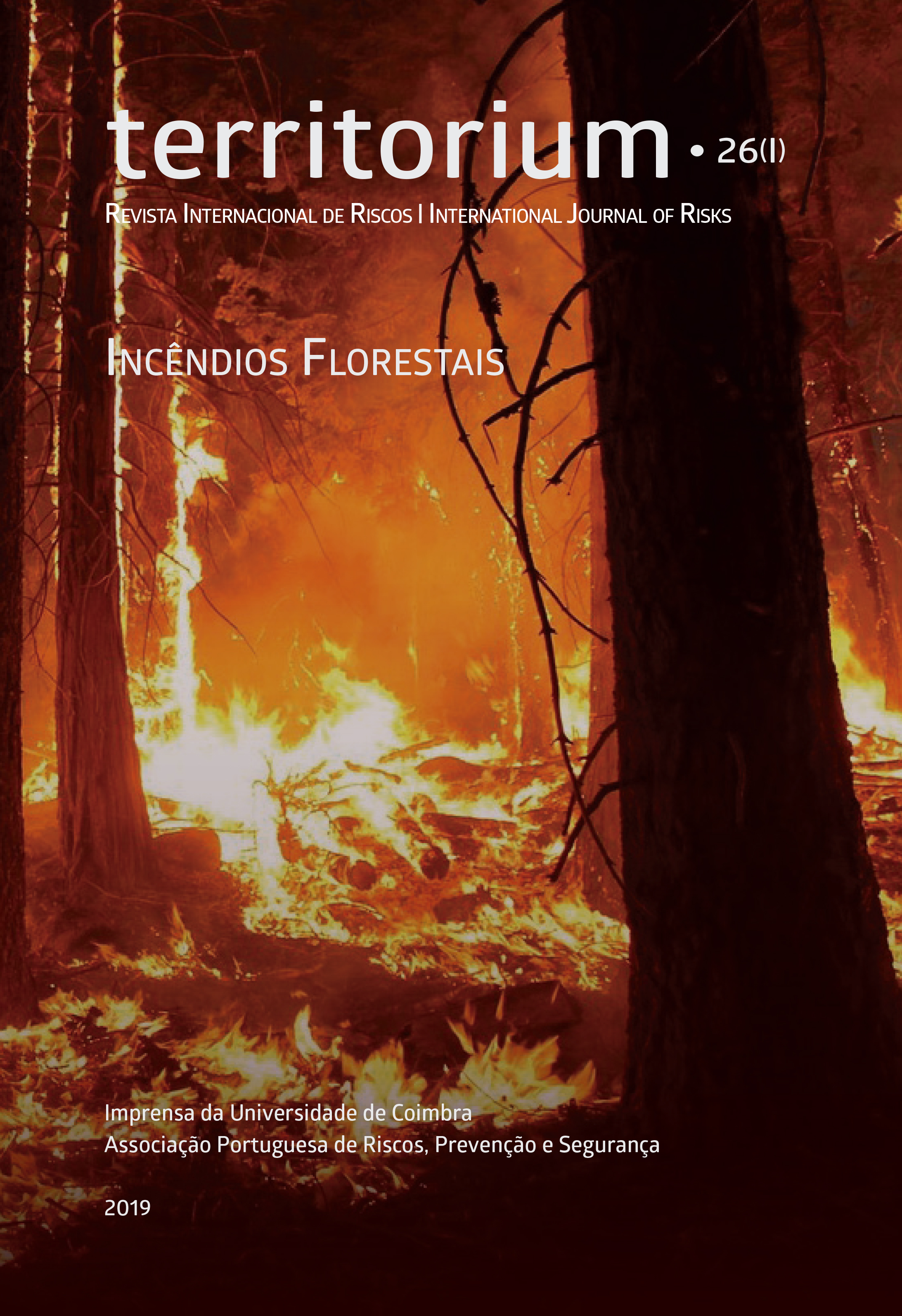INCENDIOS FORESTALES EN ESPACIOS DE FRONTERA. ANÁLISIS DE PATRONES ESPACIALES EN PAISAJES DE MONTAÑA DE LA RAYA CENTRAL HISPANO-LUSA
ANÁLISIS DE PATRONES ESPACIALES EN PAISAJES DE MONTAÑA DE LA RAYA CENTRAL HISPANO-LUSA
DOI:
https://doi.org/10.14195/1647-7723_26-1_8Palavras-chave:
Incendios forestales, montaña, frontera, estadística espacial, patronesResumo
En este trabajo se han analizado los patrones de ocurrencia de incendios forestales en los paisajes de montaña de la Raya Central Hispano-Lusa. Espacios de frontera donde se conjugan factores físicos similares y sistemas de poblamiento, económicos y de gestión de los bosques diferenciados. La metodología se ha centrado en los puntos de ignición, a través de un análisis de agrupamiento (Grouping Analysis) se ha obtenido una clasificación del territorio en cuatro grupos bien diferenciados en función de diferentes combinaciones entre el número de incendios y la superficie quemada. Este análisis revela la existencia de patrones que traspasan las fronteras administrativas y agrupan bajo un mismo clúster a entidades de uno y otro lado. Los resultados ponen de manifiesto la vulnerabilidad de los espacios de montaña ante el riesgo de incendio, principalmente por su predisposición física, pero también por los procesos demográficos y económicos que generan escenarios similares y relativizan factores como los usos del suelo o la gestión forestal, muy diversa y hasta divergente en uno u otro lado de la frontera.
Downloads
Referências
Agee, J. K. (1993). Fire ecology of Pacific Northwest forests. Island Press, Washington, DC.
Arcgis Resource Center (2015). ArcGIS Desktop Help 10.1. Environmental Systems Research Institute (ESRI). Redlands, CA, USA, 2011. http://resources.arcgis.com/en/help/main/10.1/index.html (acceso en septiembre de 2015).
Blas, R. (2011). Los Incendios Forestales en Extremadura: Análisis Espacio-Temporal (1968-2005). Cáceres.
Drury, S. A. y Veblen, T. T. (2008). Spatial and temporal variability in fire occurrence within the Las Bayas Forestry Reserve, Durango, Mexico. Plant Ecology 197, 299–316.
EFFIS (2011, 2012 y 2013). Forest Fires in Europe, Middle East and North Africa. Annual Fire Reports. European Commission, Joint Research Centre, Institute for Environment and Sustainability.
Gajović, V. y Todorović, B. (2013). Spatial and temporal analysis of fires in Serbia for period 2000-2013. Journal of the Geographical Institute, Jovan Cvijic, SASA, Volume 63, Issue 3, 297-312.
Galiana, L. (2009). Caracterización de los Escenarios del Fuego en España. 5º Congreso Forestal Español. Ávila.
Getis, A. y Ord J. K. (1992). The Analysis of Spatial Association by Use of Distance Statistics. Geographical Analysis 24.
Han–Bin, K., Woo-Kyun, L., Myoung-Soo, W., Kyo-Sang, K.,Myung-Bo L., Sang Chu, L (2007). Spatial and temporal pattern of the human–caused forest fire occurrences in Korea. Department of Forest Environment, Korea Forest Research Institute. Korea University, Seoul, Korea.
IPCC (2007). Climate Change 2007: Climate Change Impacts, Adaptation and Vulnerability. Working Group II Contribution to the Intergovernmental Panel on Climate Change Fourth Assessment Report. Cambridge University Press, Cambridge.
Keeley, J. E. (2012 ). Fire in mediterranean ecosystems: ecology, evolution and management. Cambridge University Press, Cambridge.
Lourenço, L., Bento-Gonçalves, A., Vieira, A., Nunes, A., Ferreira-Leite, F. (2012). Forest Fires in Portugal. Portugal: Economic, Political and Social Issues, Edited by: Bento-Gonçalves, António José and Vieira, António Avelino Batista. European Political, Economic, and Security Issues. Global Political Studies. Hauppauge New York. Nova Science Publishers.
Pausas, J. (2012). ¿Qué sabemos de? Incendios Forestales. CSIC, Madrid.
Pérez-Verdín, G., Y-S Kim, Hospodarski, D., y Tecle, A. (2013). Análisis espacio-temporal de la ocurrencia de incendios forestales en Durango, México. Madera y bosques, 19 (2), 37-58. Instituto de Ecología AC.
Yang, J., He, H. S., Shifley, S. R., & Gustafson, E. J. (2007). Spatial patterns of modern period human–caused fire occurrence in the Missouri Ozark highlands. Forest Science 53(1), 1–15.
##submission.downloads##
Publicado
Edição
Secção
Licença
Os autores conservam os direitos de autor e concedem à revista o direito de primeira publicação, com o trabalho simultaneamente licenciado sob a Licença Creative Commons Attribution que permite a partilha do trabalho com reconhecimento da autoria e publicação inicial nesta revista.










